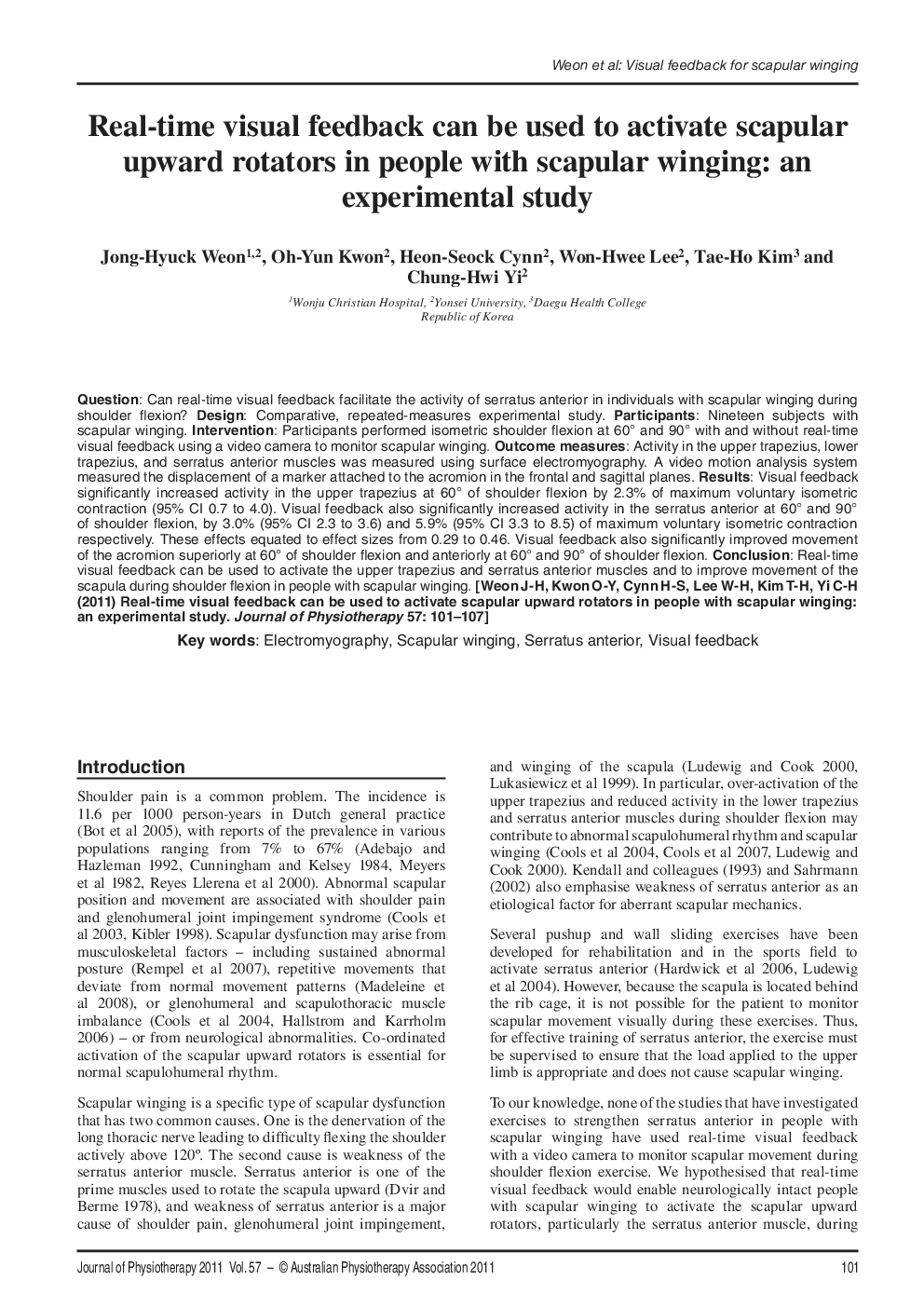| کد مقاله | کد نشریه | سال انتشار | مقاله انگلیسی | نسخه تمام متن |
|---|---|---|---|---|
| 2621883 | 1135790 | 2011 | 7 صفحه PDF | دانلود رایگان |

QuestionCan real-time visual feedback facilitate the activity of serratus anterior in individuals with scapular winging during shoulder flexion?DesignComparative, repeated-measures experimental study.ParticipantsNineteen subjects with scapular winging.InterventionParticipants performed isometric shoulder flexion at 60° and 90° with and without real-time visual feedback using a video camera to monitor scapular winging.Outcome measuresActivity in the upper trapezius, lower trapezius, and serratus anterior muscles was measured using surface electromyography. A video motion analysis system measured the displacement of a marker attached to the acromion in the frontal and sagittal planes.ResultsVisual feedback significantly increased activity in the upper trapezius at 60° of shoulder flexion by 2.3% of maximum voluntary isometric contraction (95% CI 0.7 to 4.0). Visual feedback also significantly increased activity in the serratus anterior at 60° and 90° of shoulder flexion, by 3.0% (95% CI 2.3 to 3.6) and 5.9% (95% CI 3.3 to 8.5) of maximum voluntary isometric contraction respectively. These effects equated to effect sizes from 0.29 to 0.46. Visual feedback also significantly improved movement of the acromion superiorly at 60° of shoulder flexion and anteriorly at 60° and 90° of shoulder flexion.ConclusionReal-time visual feedback can be used to activate the upper trapezius and serratus anterior muscles and to improve movement of the scapula during shoulder flexion in people with scapular winging.
Journal: Journal of Physiotherapy - Volume 57, Issue 2, 2011, Pages 101–107